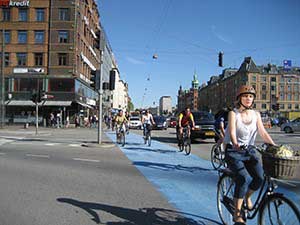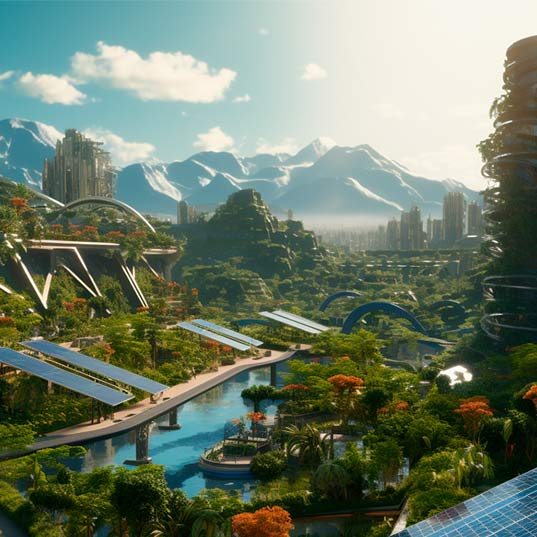The sustainable city
The unprecedented economic and demographic growth has resulted in ever-increasing aggression against the environment.It is anticipated that by the year 2050, the needs of an additional 2 billion people will have to be covered, which poses a challenge both for inhabitants and the environment.

The unprecedented economic and demographic growth in recent years has resulted in ever-increasing aggression against the environment and reflects a social and cultural fracture for the inhabitants of large cities.
Perspectives for 2050
According to a report by the OCDE, if current policies do not change, nearly 70% of the population will inhabit urban areas, involving great challenges.
It is estimated that 80% more energy will be used in 2050, which will involve more intense climate change due to an increase in CO2 emissions by 70%.
This means an increase of between 3ºC and 6ºC at the end of the century (far from the 2ºC agreed to internationally).
Loss of biodiversity, less sweet water, higher air contamination (especially in China and India). There will be even more serious problems if more ambitious steps are not taken.
This gives rise to the need for a new growth model, where the actors (public administration, private sector and inhabitants) must manage achieve a balance in the administration of natural resources.
The new model: the sustainable city
The perfect sustainable city will be one that provides its own energy and does not misuse its waste, but recycles it as new raw material. This premise has to be taken as far as possible: waste management, more sustainable transportation, preservation of parks, management and use of natural resources (water electricity, etc.), recreational cultural spaces for the inhabitants, etc. It is a city that builds itself according to ecological, educational and equality principles.
What requirements should a sustainable city meet?
The public and private sectors must offer new and better services for the population. The citizens and their behavior patterns are essential and the city should comply with certain energy efficiency and sustainability principles that achieve a balance between the environment and natural resources. ICT (Information and Communications Technology) must be an efficient tool for services.
To do so, several principles must be taken into account:
- Regeneration and preservation of natural spaces: parks, promote urban gardens, rivers, maintain forests, etc.
- Exclusive use of renewable energy sources.
- Work toward sustainable mobility.
- Commercial practices that enhance local purchases.
- Make available a comprehensive culture for the people and offer social guarantees.
- Achieve planning in construction that preserves the natural settings and promotes real access to decent housing for city inhabitants.
How to achieve these goals?
Undoubtedly, certain measures can accelerate a change towards sustainability: taxing contamination with special taxes, encourage green innovation, assigning a value and price to natural goods, eliminating subsidies that damage the environment, and, in sum, adopting community policies that solve environmental and social problems and dilemmas, and reducing the ecological footprint in large cities.
"Acting now is rational, environmentally and economically".
"In Environmental Perspectives for 2005 the approach is that if countries act now, there is still a chance - smaller all the time - that the peak of GEI global emissions will occur before 2020 and the average temperature of the world will be limited to 2ºC."
In sum the sustainable city is thinking globally and acting locally.






